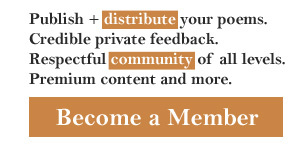This is an analysis of the poem Be Kind When You Can that begins with:
Be kind when you can, though the kindness be little,
'Tis small letters make up philosophers' scrolls;... full text
Elements of the verse: questions and answers
The information we provided is prepared by means of a special computer program. Use the criteria sheet to understand greatest poems or improve your poetry analysis essay.
- Rhyme scheme: abab cdcd efef ghgh Xdgd bibi
- Stanza lengths (in strings): 4,4,4,4,4,4,
- Closest metre: trochaic pentameter
- Сlosest rhyme: alternate rhyme
- Сlosest stanza type: sonnet
- Guessed form: unknown form
- Metre: 011111010010 11101110001 010010010110 11001001011 1101100100010 11011101001 111111001010 11101001011 1111010110010 111101110001 010110011010 101111001001 111010110110 11101110010101 1111011010010 01101001101 011011111010 11111011001 10100101010010 010001101011 1011110010010 11101001001 1010111011010 101001011001
- Amount of stanzas: 6
- Average number of symbols per stanza: 205
- Average number of words per stanza: 37
- Amount of lines: 24
- Average number of symbols per line: 51 (strings are more long than medium ones)
- Average number of words per line: 9
Mood of the speaker:
The punctuation marks are various. Neither mark predominates.
The author used lexical repetitions to emphasize a significant image; be, 'tis, that, in, by, of, for are repeated.
The poet used anaphora at the beginnings of some neighboring lines. The same word 'tis is repeated.
If you write a school or university poetry essay, you should Include in your explanation of the poem:
- summary of Be Kind When You Can;
- central theme;
- idea of the verse;
- history of its creation;
- critical appreciation.
Good luck in your poetry interpretation practice!
Pay attention: the program cannot take into account all the numerous nuances of poetic technique while analyzing. We make no warranties of any kind, express or implied, about the completeness, accuracy, reliability and suitability with respect to the information.

